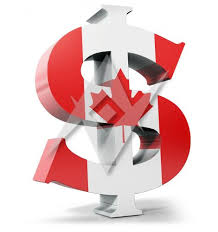By John Detrixhe - Oct 20, 2012 8:01 AM GMT+0400
 The loonie, as the currency is nicknamed for the image of aquatic bird on the C$1 coin, slumped against almost all of its most-traded peers this week. Governor Mark Carney suggested Oct. 15 that the Bank of Canada will abandon its tightening bias at the Oct. 23 policy meeting. Oil fell as forecasts from bellwether companies signaled slowing economic growth.
The loonie, as the currency is nicknamed for the image of aquatic bird on the C$1 coin, slumped against almost all of its most-traded peers this week. Governor Mark Carney suggested Oct. 15 that the Bank of Canada will abandon its tightening bias at the Oct. 23 policy meeting. Oil fell as forecasts from bellwether companies signaled slowing economic growth.
The Canadian dollar weakened against its U.S. counterpart by the most since May as a lower-than- forecast advance in consumer prices added to speculation the central bank will place less emphasis on raising policy rates.
Policy makers “are certainly walking people back and the inflation data is supportive and has weakened the Canadian dollar,” Noel Hebert, chief investment officer at Bethlehem, Pennsylvania-based Concannon Wealth Management LLC, which oversees about $250 million, said in a telephone interview. “The economy seemed to be holding in for a bit, but now you’re starting to see it falter as malaise spreads out from Asia and Europe.”
Canada’s currency dropped 1.4 percent to 99.36 cents per U.S. dollar. The decline is the biggest weekly drop since the five days that ended May 18. One Canadian dollar buys $1.0064. The currency’s 200-day moving average is $1.0001.
Carney has kept his key lending rate at 1 percent for more than two years and will probably leave it unchanged again at the Oct. 23 meeting, according to a Bloomberg economist survey.
Risk Aversion
“The tale of the tape this week from Monday on was the Carney comments were much more dovish than many people were expecting,” Shaun Osborne, chief currency strategist at Toronto-Dominion Bank, said in a telephone interview. “If we continue to grind up, it think we’ll see more focus” on the 200-day moving average.
Investor risk aversion increased yesterday after Spanish Prime Minister Mariano Rajoy said his nation doesn’t feel under any pressure to ask for a bailout, fueling concern the European Union’s debt crisis will be prolonged. Rajoy spoke after a two- day European Union summit in Brussels.
“Nothing firm came out of the EU summit, and fiscal cliff talk isn’t helping things,” Thomas Molloy, chief dealer at FX Solutions LLC, an online currency-trading company in Saddle River, New Jersey, said in a telephone interview. “It’s generally risk off.”
The so-called fiscal cliff refers to $607 billion in U.S. federal spending cuts and tax increases scheduled to take effect in January unless the U.S. Congress acts. The U.S. is Canada’s largest trading partner.
Worst Performer
Government bonds fell, pushing the benchmark 10-year note up 0.05 percentage point, or five basis points, to end the week at 1.84 percent. The price of the 2.75 percent notes maturing in June 2022 fell 44 cents to C$107.95.
Canadian government bonds have lost 0.4 percent this month, on pace for the worst monthly performance since March, according to Bank of America Merrill Lynch Index data.
The consumer price index rose 1.2 percent in September from a year ago, matching the August pace, Statistics Canada said yesterday from Ottawa. The central bank’s preferred core rate slowed to 1.3 percent from 1.6 percent in August, the least in more than a year. Economists surveyed by Bloomberg forecast total inflation of 1.3 percent and a core rate of 1.4 percent.
“The weak CPI data will have an impact on how the Bank of Canada telegraphs its forward-looking language,” Mazen Issa, Canada macro strategist at Toronto-Dominion Bank’s TD Securities unit, said in a phone interview. “The data shows that on a year-over-year basis, inflation will be fairly benign and the growth outlook won’t change between now and next week -- we’re still expecting to see below-trend growth.”
‘Generally Squishy’
Crude oil, the nation’s largest export, fell 1.9 percent this week to $90.13 a barrel in New York. The Standard & Poor’s 500 Index fell 1.7 percent yesterday, the biggest one-day decline since June, as companies including General Electric Co. reduced revenue forecasts.
“The economic weakness gets reflected in crude,” said Hebert of Concannon. “As much as the reports themselves, the guidance has been generally squishy, negative. If a lot of the corporates are seeing softness, then what does that mean from a global growth standpoint?”
To contact the reporter on this story: John Detrixhe in New York at jdetrixhe1@bloomberg.net
To contact the editor responsible for this story: Dave Liedtka at dliedtka@bloomberg.net